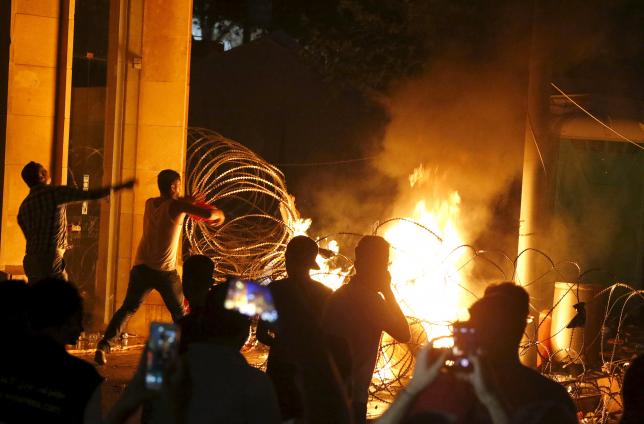Lebanon: Weekend Protests Turn Violent, Monday Sit-in Postponed

A demonstration planned for Monday in downtown Beirut was postponed a day after protest turned violent.
“The protest planned for 6 p.m. Monday has been postponed for reasons that will be announced at a midday news conference,” “You Stink” campaigners said on its Facebook account.
The brief statement said “You Stink” would also clarify “everything that happened” during the weekend demonstrations that started peacefully and ended in violence.downtown Beirut protest turned violent
Earlier on Sunday a protester was shot in his head as the demonstration turned violent. Some media reports said the protester has died from injury he had sustained. However, these reports can’t be confirmed.
Meanwhile, the Lebanese Red Cross released a “final report” on Twitter early Monday that said 343 cases were treated at the scene in LRC field hospitals while 59 others were taken to local hospitals.
What began as a peaceful protest Saturday, organized by the “You Stink” movement, erupted into violence in Riad al-Solh and nearby Martyrs Square after riot police began using water cannons, tear gas and rubber bullets to disperse protesters trying to reach Nijmeh Square.
Protesters, angered by the police response, turned out in force again Sunday, in a largely peaceful protest that moved itself to Martyrs Square after some elements within the crowd began provoking a police response.
Those who remained in Riad al-Solh clashed with riot police on and off throughout the evening, setting street debris aflame amid a barrage of tear gas and water cannons. Around midnight the Army was called in to clear the area after the rioters began damaging public property, with several shop fronts smashed on Azariah Street.
The “You Stink” campaign first launched its campaign against the government after the closure of the Naameh landfill caused trash to pile up on the streets.
The government has so far failed to reach a decision on waste management because of political disputes among cabinet members.







